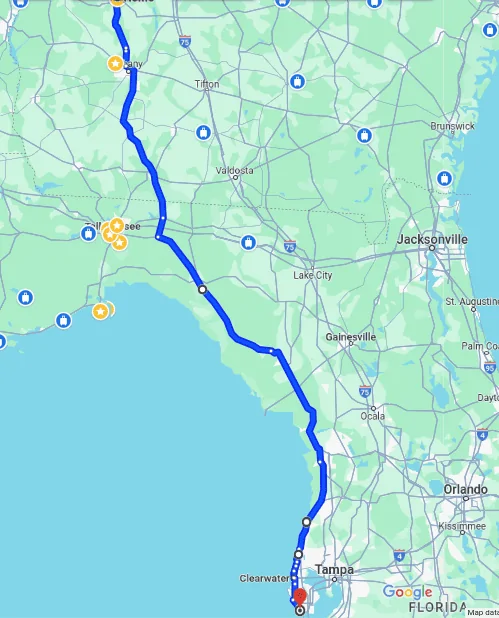TomB985
Well-known member
- First Name
- Tom
- Joined
- Jan 14, 2023
- Threads
- 17
- Messages
- 367
- Reaction score
- 776
- Location
- Isanti, MN
- Vehicles
- 2022 Lightning XLT ER
- Thread starter
- #1
I drove my truck from Minnesota to my parents' house in New Hampshire this week, which gave me the first real opportunity to get to know its travel manners. I wrote this for another forum that doesn't have many EV owners, so much of this may be a bit redundant in a group of Lightning owners. I've had four F150s in the past, but I've been driving a 2022 Model Y for the year before getting my Lightning, which frames my thoughts at the moment.
It was really comfortable. It's a completely different experience from the Model Y with its stiff, sports car-like suspension that beats you to death on trips. The regular F150 has morphed into being a comfortable family cruiser over the lanlst two decades, and the Lightning takes that a step further with a smoother ride and silent powertrain. Unlike my other EVs, I can't even hear an inverter whine when I jump on the throttle. The only powertrain noise comes from a pedestrian alert speaker that activates below 25 MPH and when backing up. I got a good comparison with a Powerboost rental truck last week while mine was in for recalls last week, and the Lightning rides noticeably better with its greater heft and independent rear suspension. I've had one car that's ridden better, but nothing has been this quiet and tranquil at highway speeds. Ford did a great job with this.
The driver assist features were really helpful. My XLT ER has their mid-level Copilot360 Assist, which offers everything but their hands-free BlueCruise. When enabled, it activates whenever the truck sees clear lane markers and automatically keeps the truck centered in its lane. It functions similar to Tesla's autopilot, but it's not as capable on sharp turns, and it'll send you into a guardrail if you're not paying attention when it gets twisty. It will operate for about ten seconds if you take your hands off the wheel before giving you a warning chime, and eventually deactivating with loud warning buzzers and flashing lights. I thought it was useful for when I was adjusting settings on the infotainment system and reaching for my coffee. It also made for a more relaxing drive as the truck mostly drove itself along those straight midwestern freeways with my close supervision.
It allows me to provide enough steering input to adjust the truck’s position in the lane, but will eventually disengage if I push harder to override its guidance. This is a much better implementation than Tesla’s Autopilot, which sharply disengages before letting you adjust lane position an inch. The adaptive cruise control is also much more consistent than Tesla’s vision-only system, presumably because Ford uses radar sensors to determine distance.
It’s not very efficient. Most EVs measure efficiency in terms of miles per kilowatt-hour of energy. The truck is rated for of 2.1 mi/kWh on the EPA test cycle, and most reviews suggest it’s capable of nearly that on the highway. I’ve never seen anything close to those numbers, and this trip was no exception. Conditions weren’t great with a moderate headwind and 25-40º temperature for the entire trip, but I could only manage 1.5-1.8 at speeds of 65-70 MPH. Gas prices have been dropping, but fast charging rates have stayed relatively constant, and this thing is one of the least-efficient EVs on the road.
Part of my lousy efficiency may be the tires. I had the dealer install Firestone Destination A/T2s because of their great ratings in snow, but their aggressive siping will make them less efficient than the highway tread on the factory rubber. The Lightning also relies on a resistive heater to keep the cabin warm instead of a much more efficient heat pump that other EVs use. My Model Y and EV6 would draw between 1-1.5 kW to keep me warm at those temperatures, but the truck was drawing between 3-4 kW from its immersion heater that warms coolant piped into a heater core in the dash. This is going to be an even bigger drop as the temperatures get cooler, but the 2024 models will be much better.
Electrify America is the most prolific EV charging network, so I subscribed to their Pass+ program which bought me a 25% rate reduction for a $7 monthly fee. That lowered my cost to $0.36/kWh at their stations, but the cost was still significant.
At 1.5 mi/kWh, my Extended Range 130 kWh battery would take me only 195 miles if it were fully charged. Going from empty to full would cost me 130*0.36 = $46.80. That’s a lot of money for less than 200 miles of range. Fortunately(for me) the state of Wisconsin doesn’t permit non-utilities to sell electricity by the kilowatt-hour, so their fast chargers operate on a per-minute basis. The Lightning charges fast enough to make it significantly cheaper, but people with smaller and less-expensive EVs pay a lot more because they can’t charge as fast.
My total charging cost was $180 for the 1,450-mile trip. That’s a lot less than it would have been if I were paying $0.36 for every kilowatt I burned, but I was able to start from a full charge and stay at a hotel with an EV charger on the way.
Charging was less of a hassle than I expected. The Lightning has a peak rate of 150 kW on paper, so I was expecting significantly longer charge times than my Model Y. I was pleasantly surprised to see it consistently charge at 170-180 kW at EA’s high-powered charge stations. EV batteries usually see peak rates when they are deeply discharged, but the Lightning’s big pack has a better charge curve than anything I’ve owned. It would spike to over 160 kW if you plug in as high as 60%, and held higher rates much longer than anything I’ve had before. Most of my charge stops were between 25-40 minutes, and it was often ready to go before I was.
Electrify America’s awful reliability was a big factor behind dumping my EV6 for my Model Y. The world is turning inside-out because EA’s chargers were flawless for me. I was 6/6 with their stations, but my two stops on the Shell Recharge network gave me nothing but problems.
Most infuriating was at the Madison charging hub, which is operated by their local utility company. I plugged in to Unit 2 and started charging normally, so I went inside the gas station to use the bathroom. I came out to find it shut down after 10 kWh, so I moved over to Unit 1, and it wouldn’t recognize the truck. Unit 3 was offline, Unit 4 gave me an error, and Units 5 and 6 gave me payment glitches from their app. A ten-minute call to customer service later, I was charging at a reduced rate of 70 kW. It doesn’t take a math wizard to realize how much longer it takes to fill my 130 kWh tank at that rate. The Tesla drivers at the adjoining Supercharger station must have found my problems funny, but I was laughing on the inside with the insanely cheap rate I got from these finicky chargers. All of that frustration got me a nearly-full charge for under $5.
For the entire trip, I had less charging trouble than I’ve seen with non-Tesla stations in the past. There are significantly more stations, and my concerns will disappear next year when Tesla’s network opens up.
Overall, I’m really happy with it. I switched to the Lightning from a Model Y because I wanted an EV with better towing range for my 3,000-lb folding camper. I love the comfortable ride, and the driver assistance features are easier to live with than Tesla’s inflexible Autopilot. The Lightning is a much less fatiguing highway cruiser that makes up for lower efficiency with a much larger battery pack. It seems to have a bit longer real-world range than the Model Y, but I pay for that at the charging stop.





It was really comfortable. It's a completely different experience from the Model Y with its stiff, sports car-like suspension that beats you to death on trips. The regular F150 has morphed into being a comfortable family cruiser over the lanlst two decades, and the Lightning takes that a step further with a smoother ride and silent powertrain. Unlike my other EVs, I can't even hear an inverter whine when I jump on the throttle. The only powertrain noise comes from a pedestrian alert speaker that activates below 25 MPH and when backing up. I got a good comparison with a Powerboost rental truck last week while mine was in for recalls last week, and the Lightning rides noticeably better with its greater heft and independent rear suspension. I've had one car that's ridden better, but nothing has been this quiet and tranquil at highway speeds. Ford did a great job with this.
The driver assist features were really helpful. My XLT ER has their mid-level Copilot360 Assist, which offers everything but their hands-free BlueCruise. When enabled, it activates whenever the truck sees clear lane markers and automatically keeps the truck centered in its lane. It functions similar to Tesla's autopilot, but it's not as capable on sharp turns, and it'll send you into a guardrail if you're not paying attention when it gets twisty. It will operate for about ten seconds if you take your hands off the wheel before giving you a warning chime, and eventually deactivating with loud warning buzzers and flashing lights. I thought it was useful for when I was adjusting settings on the infotainment system and reaching for my coffee. It also made for a more relaxing drive as the truck mostly drove itself along those straight midwestern freeways with my close supervision.
It allows me to provide enough steering input to adjust the truck’s position in the lane, but will eventually disengage if I push harder to override its guidance. This is a much better implementation than Tesla’s Autopilot, which sharply disengages before letting you adjust lane position an inch. The adaptive cruise control is also much more consistent than Tesla’s vision-only system, presumably because Ford uses radar sensors to determine distance.
It’s not very efficient. Most EVs measure efficiency in terms of miles per kilowatt-hour of energy. The truck is rated for of 2.1 mi/kWh on the EPA test cycle, and most reviews suggest it’s capable of nearly that on the highway. I’ve never seen anything close to those numbers, and this trip was no exception. Conditions weren’t great with a moderate headwind and 25-40º temperature for the entire trip, but I could only manage 1.5-1.8 at speeds of 65-70 MPH. Gas prices have been dropping, but fast charging rates have stayed relatively constant, and this thing is one of the least-efficient EVs on the road.
Part of my lousy efficiency may be the tires. I had the dealer install Firestone Destination A/T2s because of their great ratings in snow, but their aggressive siping will make them less efficient than the highway tread on the factory rubber. The Lightning also relies on a resistive heater to keep the cabin warm instead of a much more efficient heat pump that other EVs use. My Model Y and EV6 would draw between 1-1.5 kW to keep me warm at those temperatures, but the truck was drawing between 3-4 kW from its immersion heater that warms coolant piped into a heater core in the dash. This is going to be an even bigger drop as the temperatures get cooler, but the 2024 models will be much better.
Electrify America is the most prolific EV charging network, so I subscribed to their Pass+ program which bought me a 25% rate reduction for a $7 monthly fee. That lowered my cost to $0.36/kWh at their stations, but the cost was still significant.
At 1.5 mi/kWh, my Extended Range 130 kWh battery would take me only 195 miles if it were fully charged. Going from empty to full would cost me 130*0.36 = $46.80. That’s a lot of money for less than 200 miles of range. Fortunately(for me) the state of Wisconsin doesn’t permit non-utilities to sell electricity by the kilowatt-hour, so their fast chargers operate on a per-minute basis. The Lightning charges fast enough to make it significantly cheaper, but people with smaller and less-expensive EVs pay a lot more because they can’t charge as fast.
My total charging cost was $180 for the 1,450-mile trip. That’s a lot less than it would have been if I were paying $0.36 for every kilowatt I burned, but I was able to start from a full charge and stay at a hotel with an EV charger on the way.
Charging was less of a hassle than I expected. The Lightning has a peak rate of 150 kW on paper, so I was expecting significantly longer charge times than my Model Y. I was pleasantly surprised to see it consistently charge at 170-180 kW at EA’s high-powered charge stations. EV batteries usually see peak rates when they are deeply discharged, but the Lightning’s big pack has a better charge curve than anything I’ve owned. It would spike to over 160 kW if you plug in as high as 60%, and held higher rates much longer than anything I’ve had before. Most of my charge stops were between 25-40 minutes, and it was often ready to go before I was.
Electrify America’s awful reliability was a big factor behind dumping my EV6 for my Model Y. The world is turning inside-out because EA’s chargers were flawless for me. I was 6/6 with their stations, but my two stops on the Shell Recharge network gave me nothing but problems.
Most infuriating was at the Madison charging hub, which is operated by their local utility company. I plugged in to Unit 2 and started charging normally, so I went inside the gas station to use the bathroom. I came out to find it shut down after 10 kWh, so I moved over to Unit 1, and it wouldn’t recognize the truck. Unit 3 was offline, Unit 4 gave me an error, and Units 5 and 6 gave me payment glitches from their app. A ten-minute call to customer service later, I was charging at a reduced rate of 70 kW. It doesn’t take a math wizard to realize how much longer it takes to fill my 130 kWh tank at that rate. The Tesla drivers at the adjoining Supercharger station must have found my problems funny, but I was laughing on the inside with the insanely cheap rate I got from these finicky chargers. All of that frustration got me a nearly-full charge for under $5.
For the entire trip, I had less charging trouble than I’ve seen with non-Tesla stations in the past. There are significantly more stations, and my concerns will disappear next year when Tesla’s network opens up.
Overall, I’m really happy with it. I switched to the Lightning from a Model Y because I wanted an EV with better towing range for my 3,000-lb folding camper. I love the comfortable ride, and the driver assistance features are easier to live with than Tesla’s inflexible Autopilot. The Lightning is a much less fatiguing highway cruiser that makes up for lower efficiency with a much larger battery pack. It seems to have a bit longer real-world range than the Model Y, but I pay for that at the charging stop.
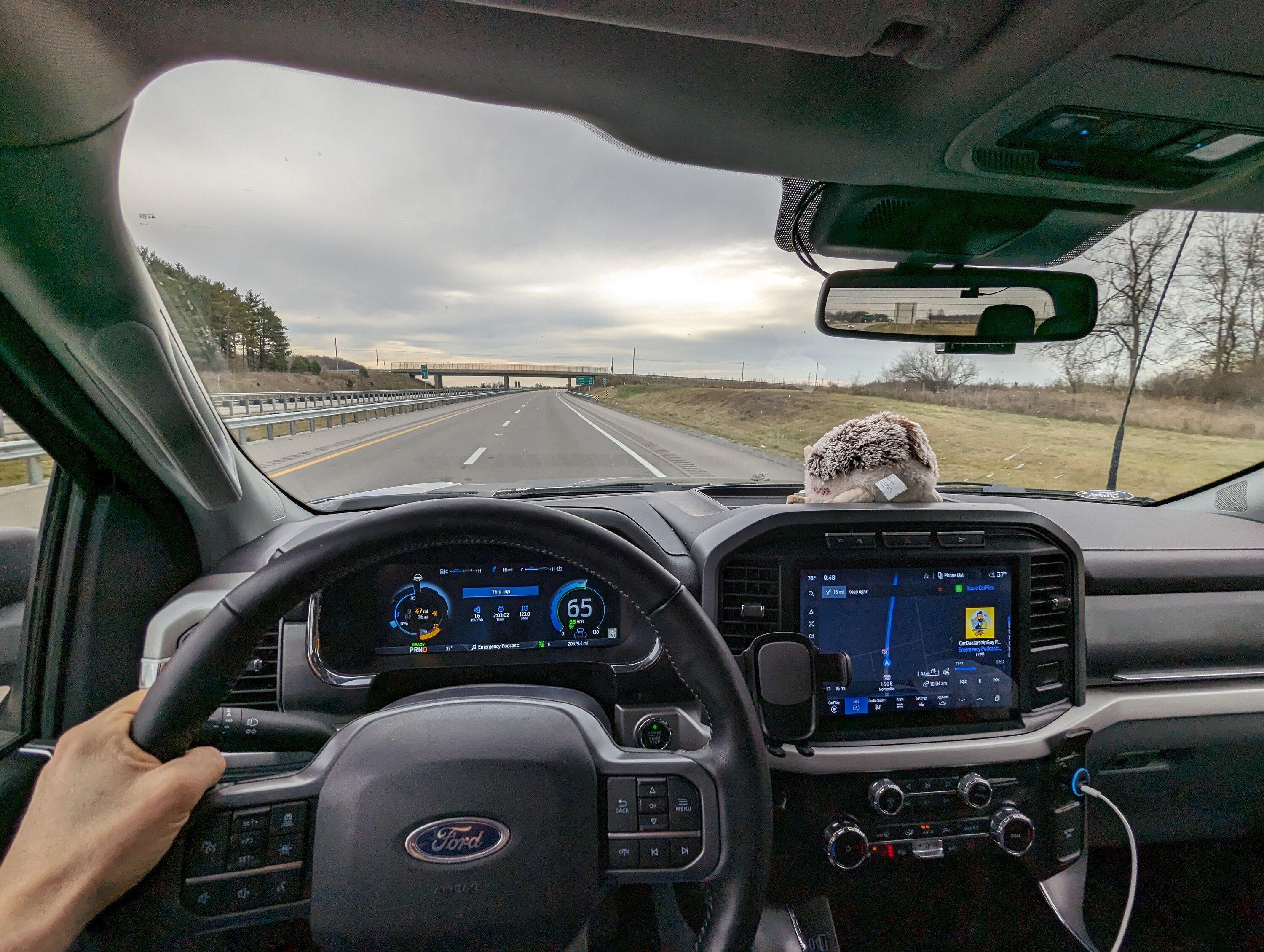
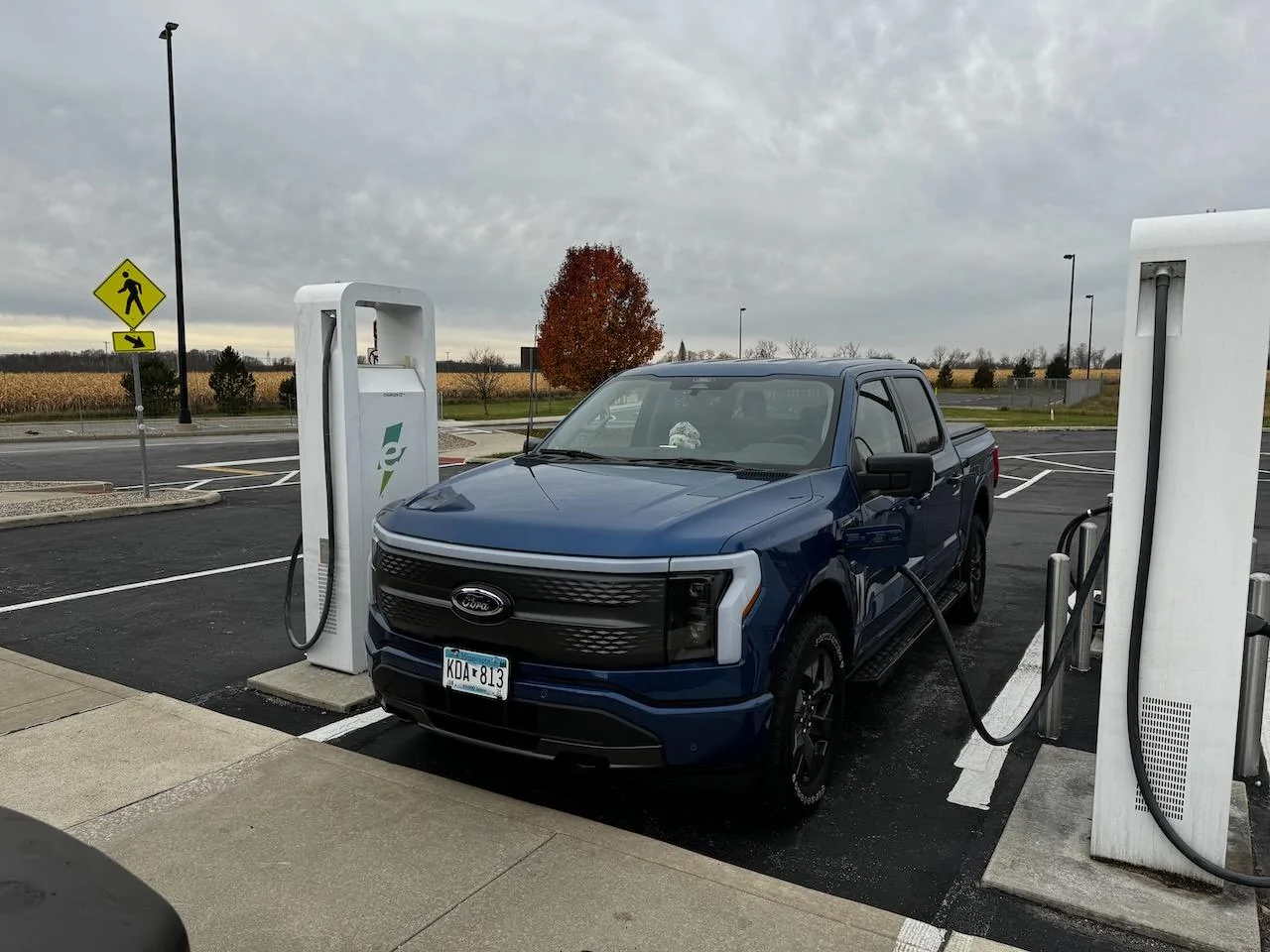
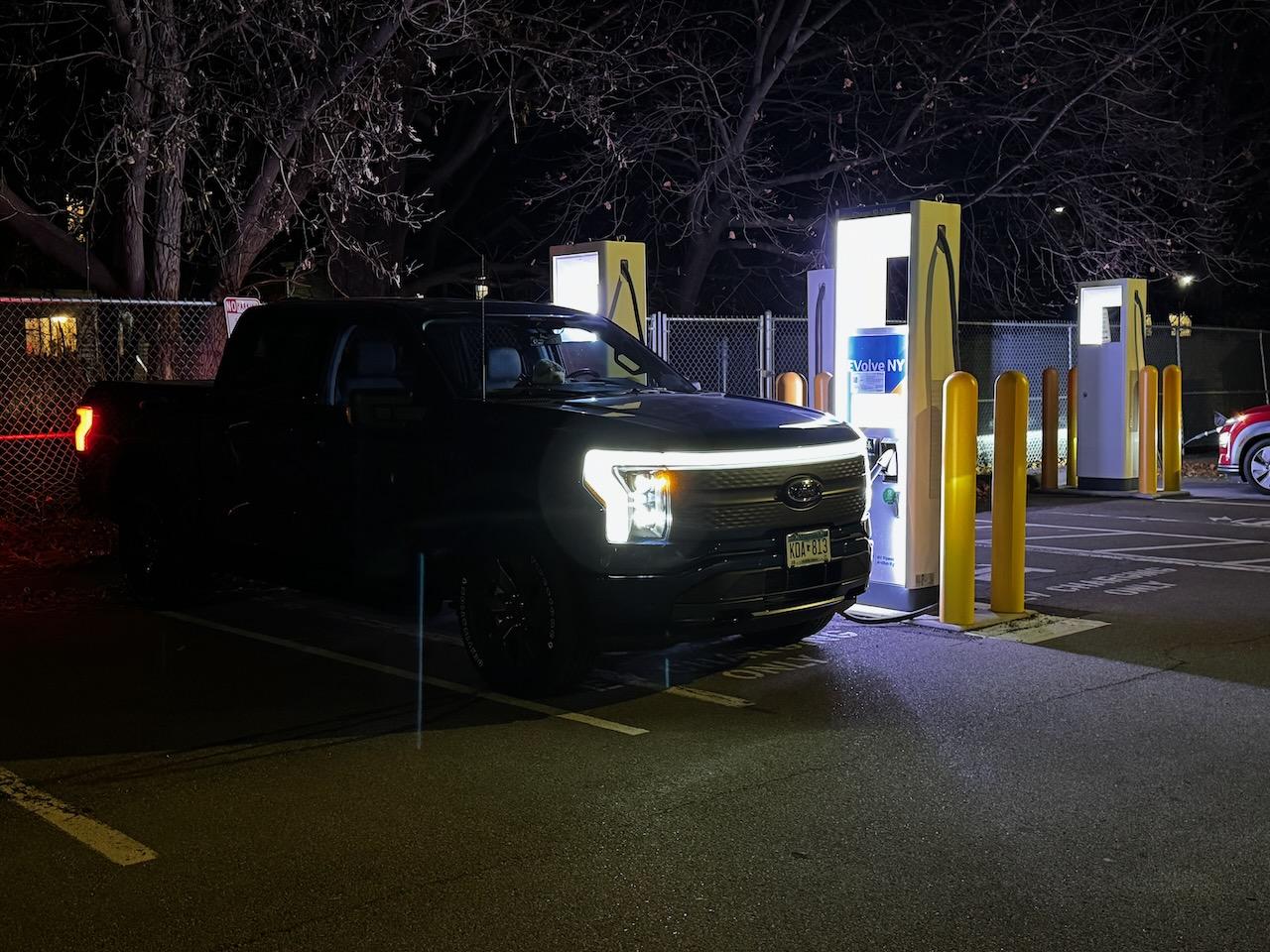
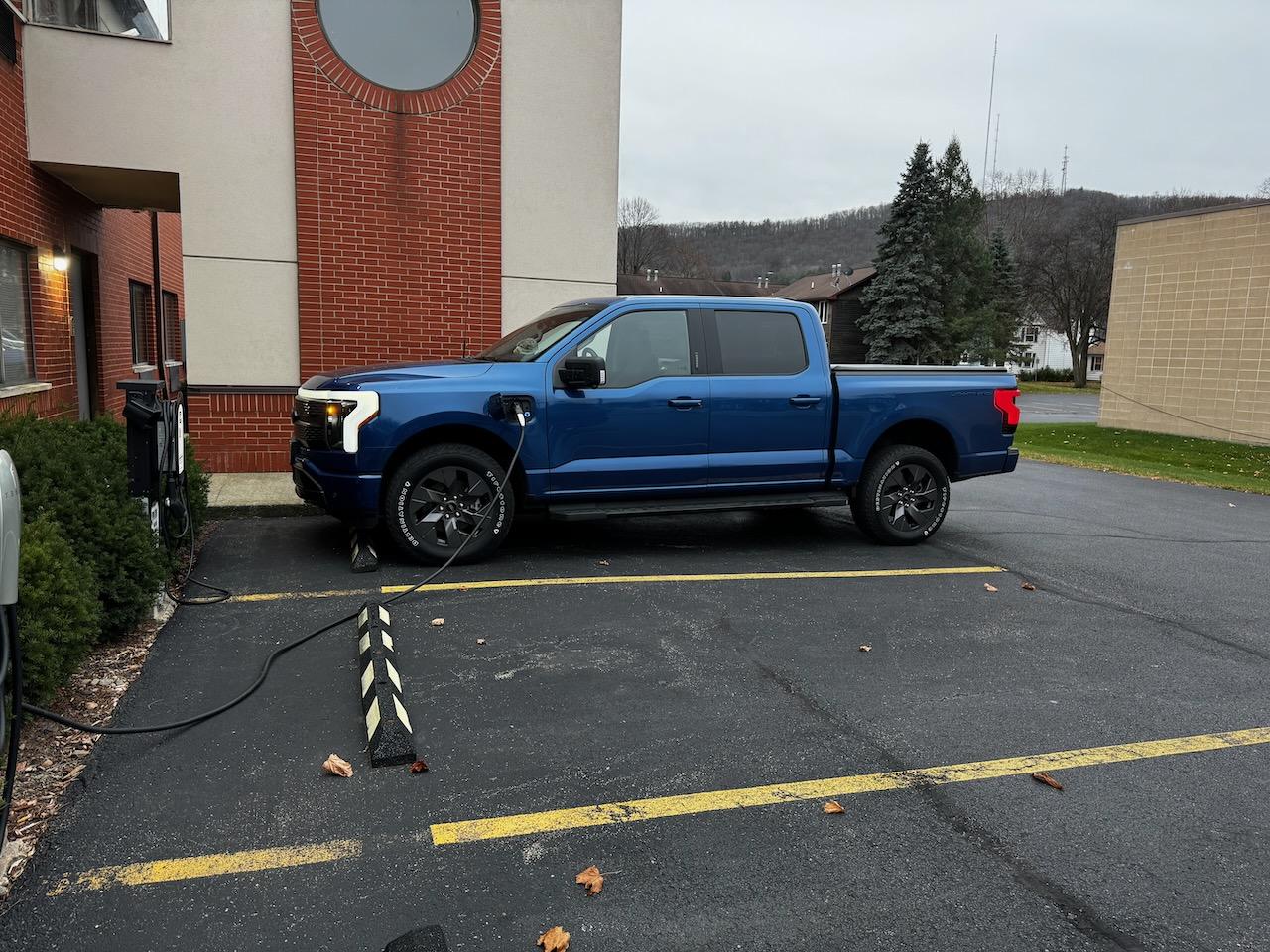
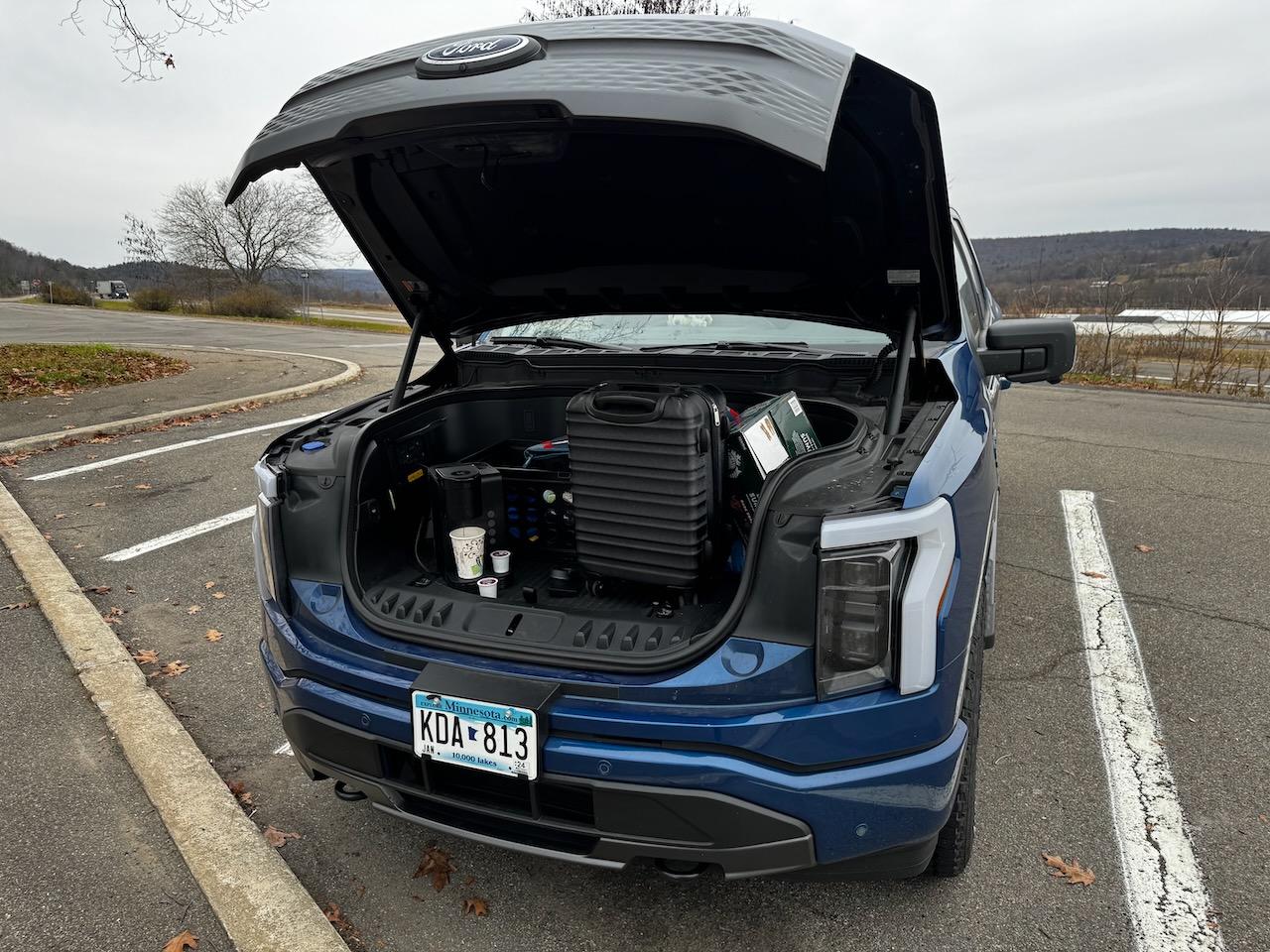
Sponsored


